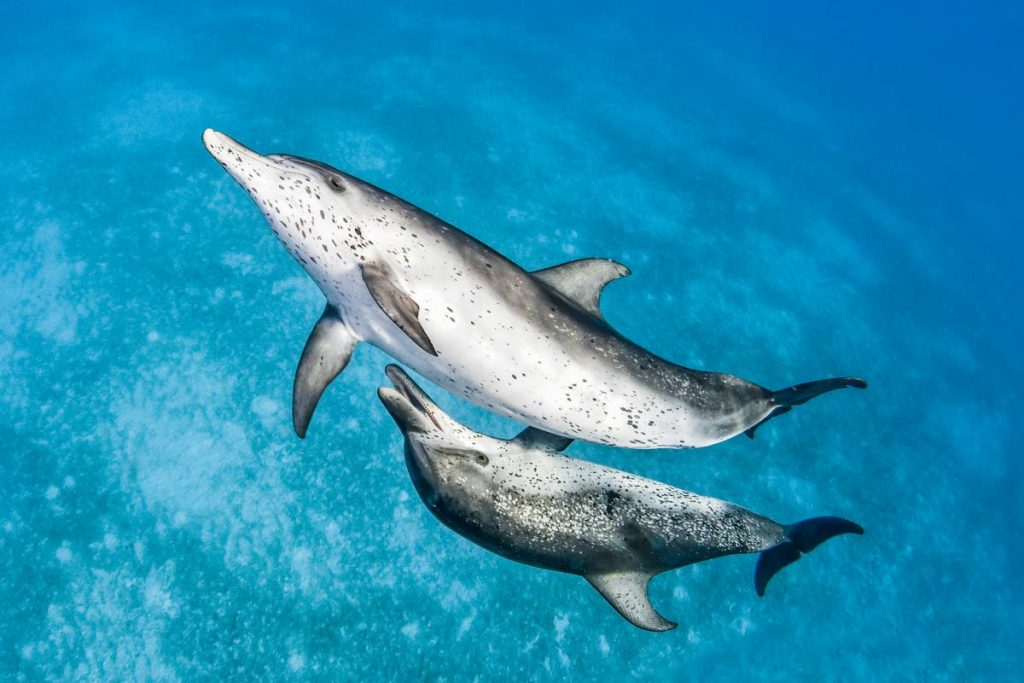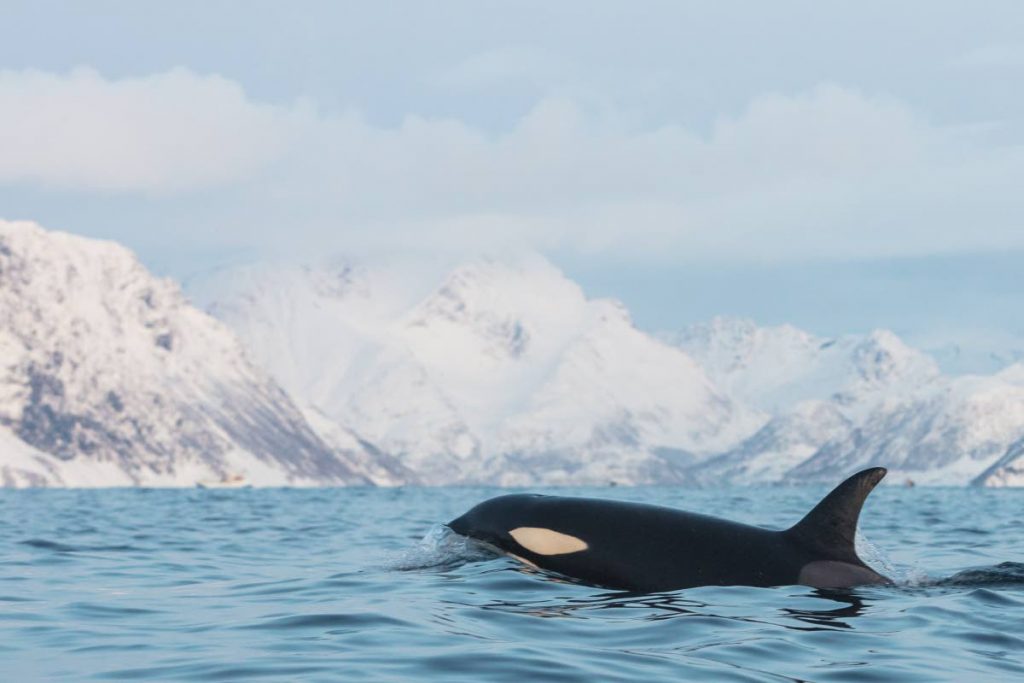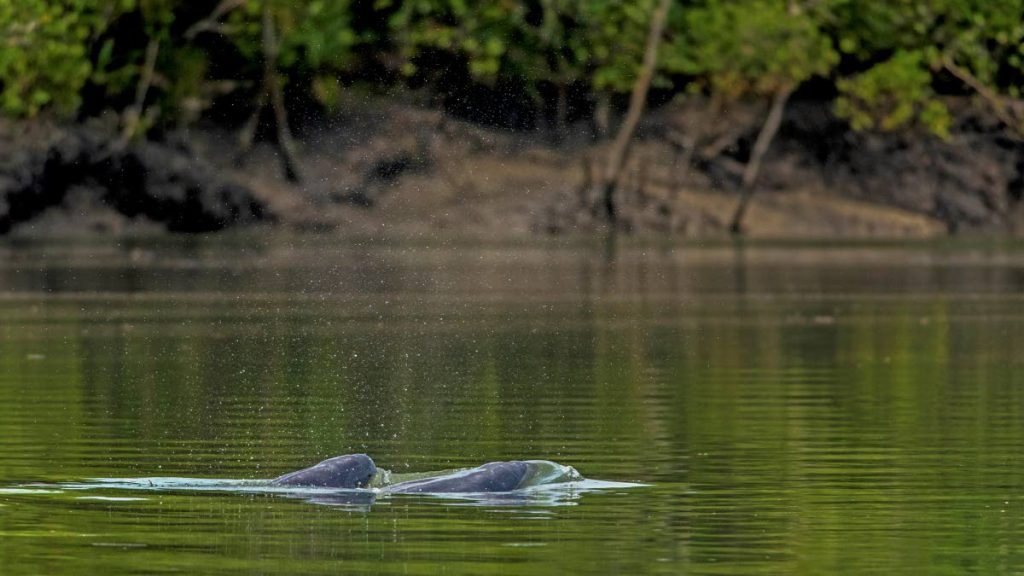What you should know about dolphins

Dolphin sightings in waters around our islands are welcomed as happy, auspicious signs. Highly intelligent and playful, they inhabit or traverse waters around the world and they need our protection. Dr Anjani Ganase provides some facts about these marine mammals.
Their diversity
Did you know that killer whales, false killer whales and melon-head whales are dolphins? All are members of the family Delphinidae. There are 42 species of dolphins found all over the world. They roam the open ocean and dolphin species are found in all the oceans and seas with a few exceptions. While most prefer warmer tropical waters, there are a few species, such as the orcas, that travel to the polar regions. Orcas have even been encountered along the north coast of Trinidad.

Their sizes
The biggest dolphin species are the orcas or killer whales. Killer whales get up to six to eight metres in length and up to six tons. Such immense size does not keep them from swimming at speeds up to 56km/h; among the deadliest predators in the ocean. The smallest dolphin is known as Hector’s dolphin, incredibly rare as they are only found in the south Pacific along the coast of New Zealand. They have a distinct look: a blunt beak and the dorsal fin resembles a mickey mouse ear. Hector’s dolphins can weigh just over 100 lbs and get to 1.5 m in length. They tend to hunt in the coastal, turbid waters around New Zealand. A sub-species of the New Zealand dolphin is the Maui dolphin found in Hawai’i. Unfortunately, only 50 individuals of this sub species remain.
Their cousins
Dolphins and porpoises are related as they both fall under the super family of toothed whales Delphinoidea. While dolphins (Delphinidae) consist of a family of 38 ocean-dwelling species and four river species, the porpoise family (Phocoenidae) has only seven species, one of which is found in freshwater in Asia. Compared to the dolphins, porpoises are smaller in size, they don’t have such a bulbous head and lack a pronounced beak. Also, porpoises’ teeth are like spades compared to the conical teeth of dolphins. Porpoises have a shorter life span, on average 20 years. They are generally less social than dolphins, so it is unlikely that they’ll be coming around for a bow ride. One exception is the Dall’s porpoise, common to the north Pacific Ocean, which is more social. The most critically-endangered species of porpoise is the vaquita dolphins, found in a small area in the Gulf of California along the east coast of Mexico. Their populations were decimated by standing fishing nets that resulted in the decline from 600 to ten between 1996 and 2019.
River dolphins
The most peculiar dolphins are the species that are adapted to rivers. Owing to their limited range and the degree of human development along rivers, including pollution, damming and the removal of food and habitat, river dolphins are the most threatened. In the Amazon, there are three species: Amazon river dolphin, the Bolivian river dolphin, and the Tucuxi, a subspecies of the Amazon river dolphin found in both the Amazon and Orinoco rivers. The Ganges river dolphin is in Nepal, India, and Bangladesh. The Indus river dolphin occurs in Pakistan and in the Beas river in India. The habitat of the Indus river dolphin is now severely restricted to the lower regions as part of the Indus dried up over the years. The Irrawaddy dolphin is found in the rivers and coastal waters of Indonesia, Malaysia and Myanmar. In the Mekong river of southeast Asia, fewer than 100 of them remain. Not only are they crucial for the health of the river, but they are sacred to the local communities. The Baiji river dolphin of the Yangtze river in China was declared extinct in 2007. Of the river porpoises, the Yangtze river is still home to the critically-endangered Yangtze finless porpoise. They are known for their high intelligence and are protected.

Echolocation
Dolphins use echolocation to navigate. They generate high frequency click sounds, which are directed through the fatty lobe on the head, known as the melon, to target objects in the water column. When the sound reflects off the object, the sound wave is received through the jawbone of the dolphin. This does not mean that they don’t have good eyesight, in fact some species of dolphins found in the open ocean can see very well. However, the river dolphins depend on echolocation rather than eyesight because of their permanently murky habitat.
Strange adaptations
During the development of the dolphin foetus, the nasal passageway forms in a similar position to other mammals, but by birth the nasal passage migrates to the position of the blow hole and is further separated from the mouth as the dolphin’s beak is formed. The orientation of the blowhole on top of the head is ideal for a quick breath while swimming without having to stick its head out of the water. Japanese researchers also found that the great swimming efficiency of dolphins was the result of soft flexible skin that can be rapidly shed.
Threats
Major threat to dolphins includes hunting and by-catch. St Vincent and the Grenadines in the Eastern Caribbean as well as other locations in the Americas, Japan and Iceland continue to hunt whales and dolphins. In St Vincent and the Grenadines there are two major operations – one off the main island that targets small cetaceans, such as pilot whales and killer whales, while the operation off Bequia targets the humpback whales during their annual migration. St Vincent and the Grenadines has been hunting since the 1800s, for subsistence harvesting.
Such deliberate activities as well as accidental death take a toll on populations. Dolphins are often caught in fishing nets in industrial fishing in major oceans, as well as in small-scale fisheries that use gill nets in coastal areas. The dolphins drown entangled in the nets. Surely it is time to discontinue this practice, considering the long lives of whales and how unnecessary this act is in human development. Let us appreciate the value of being able to encounter such majestic creatures in our ocean backyard, whereas others have to travel far to catch such a glimpse.
References:
https://uk.whales.org/whales-dolphins/facts-about-dolphins/
https://www.worldwildlife.org/stories/freshwater-dolphin-species-and-facts
Fielding, R., & Kiszka, J. J. (2021). Artisanal and Aboriginal Subsistence Whaling in Saint

Vincent and the Grenadines (Eastern Caribbean): History, Catch Characteristics, and Needs for Research and Management. Frontiers in Marine Science, 8, 397.
Newcastle University. "Bycatch risk for dolphins and porpoises in global small-scale fisheries." ScienceDaily. ScienceDaily, 15 June 2021.
Institute Of Physics. "Scientists Discover Secret Of Dolphin Speed: How Dolphins Evolved To Fly Like Birds Under Water." ScienceDaily. ScienceDaily, 17 May 2004.


Comments
"What you should know about dolphins"